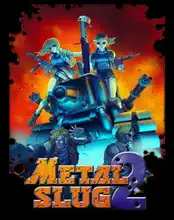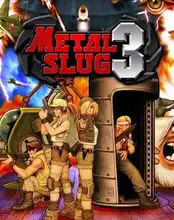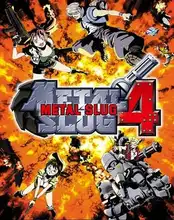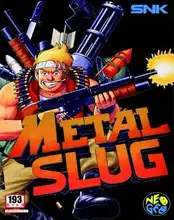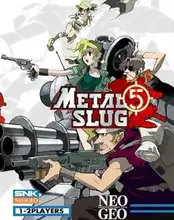Metal Slug: Reliving the Chaotic Run 'n' Gun Glory
Step right up, retro enthusiasts! Let's talk about a series that defined arcade action for a generation: Metal Slug. Forget subtle tactics; this is pure, unadulterated, pixel-perfect chaos delivered at breakneck speed. It's the kind of game that sucked up all your allowance money, left your thumbs sore, and plastered a grin on your face with every screen-filling explosion and ridiculous enemy death animation.
But what was it about the Metal Slug series that made it so utterly unforgettable, even decades later? Let's blast through the details and see why it still holds up.
What Makes Metal Slug So Special?
It wasn't just another side-scrolling shooter. Metal Slug had a secret sauce, a blend of elements that elevated it beyond the competition:
- Jaw-Dropping Animation: This is arguably the series' biggest draw. Every character sprite, every enemy, every vehicle, and every explosion is meticulously hand-drawn with an incredible level of detail and fluid animation. Watching a soldier recoil from a blast or a tank explode in a shower of debris is pure pixel art mastery.
- Over-the-Top Humor: Amidst the intense firefights, Metal Slug is genuinely hilarious. From the exaggerated death screams of enemies to the goofy expressions of captured POWs (who reward you with items!), the game never takes itself too seriously. The little touches, like your character striking a pose after clearing a section, add immense personality.
- Tight, Responsive Gameplay: While chaotic, the controls are sharp. Running, jumping, shooting, throwing grenades – it all feels incredibly fluid, allowing for precise movements even when the screen is filled with bullets and enemies.
- Iconic Vehicles (Slugs!): The titular "Metal Slug" tank is just the beginning. You'll pilot planes, submarines, camels with cannons, and even bipedal walkers. These vehicles aren't just power-ups; they change the gameplay dynamics and are often as charmingly animated as the characters.
- Challenging, But Fair: Metal Slug is tough, especially if you're aiming for a single-credit clear. But deaths usually feel earned, and the checkpoint system (in home ports, at least) makes it accessible enough for modern players while retaining the arcade challenge.
The Core Games: A Quick Rundown
The series boasts numerous entries, but a few stand out as fan favorites and essential experiences:
- Metal Slug (1996): The original classic that set the standard. Introduced the core mechanics, characters, and signature art style.
- Metal Slug 2 (1998) / Metal Slug X (1999): MS2 added new characters, vehicles, and mechanics (like turning into a mummy!). MSX is essentially an improved, less buggy version of MS2 with tweaked difficulty and enemy placement – often considered the definitive version of this era.
- Metal Slug 3 (2000): Widely regarded as the pinnacle of the series. It took everything MSX did and cranked it up to eleven with branching paths, incredibly creative level design, bizarre enemy types (zombies, aliens, giant insects!), and epic boss battles. A masterpiece of the genre.
While later entries like MS4, MS5, and MS6 have their fans, the original trilogy (especially MSX and MS3) are where the heart of the Metal Slug experience lies for many.
Reliving the Run 'n' Gun Glory Today
Thankfully, you don't need to hunt down an old Neo Geo or find a dusty arcade cabinet to play Metal Slug anymore. SNK has been great about porting the series to modern platforms:
- Digital Stores: Most major entries are available on platforms like Steam, PlayStation Store, Xbox Games Store, and Nintendo eShop. Search for "Metal Slug Anthology" or individual titles like "Metal Slug 3".
- Mobile: Yes, you can even get official ports on iOS and Android, though touch controls aren't the ideal way to experience the intensity.
- Collections: Keep an eye out for collections like "Metal Slug Anthology" or "Metal Slug XX" (an updated version of MS7).
Playing on PC via Steam often gives you options for different display settings, controller support, and sometimes even online co-op, letting you experience the chaos with a friend just like in the arcade days.
Why Metal Slug Still Holds Up
In an era of hyper-realistic graphics and complex mechanics, the simple, explosive joy of Metal Slug remains incredibly refreshing. Its timeless pixel art, infectious energy, and pure focus on fun gameplay ensure it hasn't faded into obscurity. It's a perfect example of arcade design at its finest – easy to pick up, difficult to master, and endlessly entertaining.
Whether you're a veteran who pumped countless quarters into the machine or a newcomer curious about classic run 'n' gun action, diving into the world of Metal Slug is an absolute blast.
FAQ About Metal Slug
Q: Which Metal Slug game should I play first? A: Metal Slug 3 is often cited as the best and most representative of the series' peak, but Metal Slug (the first one) is a great starting point to see where it all began. Metal Slug X is also excellent and a good alternative to MS2.
Q: Is Metal Slug very difficult? A: Yes, it can be! It was designed as an arcade game to take your money. However, home console/PC ports usually offer unlimited continues, allowing you to experience the full game even if you're not a pro.
Q: Are the newer Metal Slug games as good as the old ones? A: Opinions vary, but the original trilogy (Metal Slug 1, X, and 3) are generally considered the classics and fan favorites. Later entries changed things up with 3D graphics (MS4) or different systems (MS6, MS7/XX), with mixed reception.
Q: Where can I buy Metal Slug games today? A: Look for them on digital storefronts like Steam, PlayStation Store, Xbox Games Store, Nintendo eShop, and GOG. Collections are often available and offer good value.
Note: This post contains mentions of games and platforms. Links to specific stores or external sites are not provided in this Markdown output but would be added in a live blog post.

